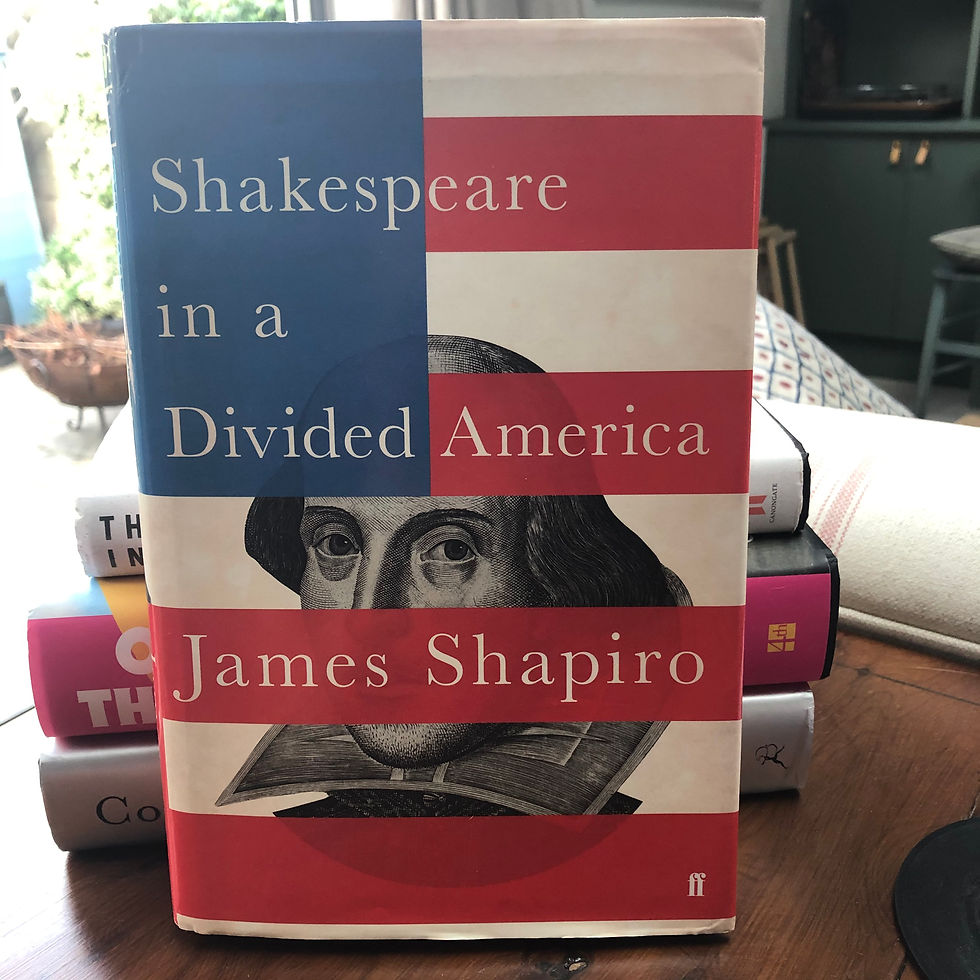21: Shakespeare in a Divided America
- Rory Marsden

- Sep 15, 2020
- 3 min read
A book by James Shapiro

This — is called an em dash. It’s got quite the reputation. Some love it. Some hate it. The inimitable Emily Dickinson used it a ton. According to landmark American style guide The Elements of Style it is “a mark of separation stronger than a comma, less formal than a colon, and more relaxed than parentheses”.
As far as there can be a rockstar piece of punctuation, the em dash is it.
Towards the end of the brilliant Shakespeare in a Divided America, renowned Bard scholar James Shapiro uses an em dash to devastating effect. Take a look:
“The Right under Donald Trump—who may be the first American president to express no interest in Shakespeare—now found itself struggling to find anything in the teaching or performance of Shakespeare’s plays that aligned with its political and social agenda, and didn’t much seem to care.”
I believe that’s what this particular GIF was invented for:
It’s an evisceration. Wielding just a pair of superhero em dashes and 13 words, Shapiro cuts to the very core of what’s wrong with the man currently occupying 1600 Pennsylvania Avenue…
Right? No? You’re saying it’s not that big a deal that Trump doesn’t give a monkey’s about Shakespeare? Give Shapiro’s book a read and you may come to think differently. Because what Shakespeare in a Divided America does so superbly is explain just how crucial Shakespeare has been—and continues to be—to the very fabric of the United States. When big things happen across the pond, Bill’s about.
In his book, Shapiro takes a chronological look at eight significant events in US history that were informed by Shakespeare. Possibly the most dramatic took place at New York’s Astor Place Opera House on May 10, 1849, “where a huge crowd, estimated at somewhere between 10,000 and 24,000, gathered to protest a performance of Macbeth by the British actor William Macready”. The ensuing riot left at least 22 dead and scores more injured.
Sixteen years later, it was at another theatre—Ford’s Theatre in Washington, D.C.—that Abraham Lincoln was assassinated by John Wilkes Booth while attending a performance of Our American Cousin. Both Lincoln and Booth were Shakespeare obsessives, Shapiro tells us. Booth was a Julius Caesar man who fancied himself an American Brutus. For Lincoln, it was all about Macbeth. And it was to Macbeth that Americans turned in mourning Lincoln, likening him to Duncan, who:
Hath borne his faculties so meek, hath been
So clear in his great office, that his virtues
Will plead like angels, trumpet-tongued, against
The deep damnation of his taking-off.
In 2017, it was the open-air Delacorte Theater’s turn to host a Shakespearean showdown when a New York Public Theater production of Julius Caesar had a not-so-thinly-veiled Trump as the title character. Despite the play being a cautionary tale against political violence, the assassination scene inevitably proved too much for the Right, who duly lost their collective minds.
It’s not all politics. The penultimate chapter (1998: Adultery and Same-Sex Love) recounts the tortuous route of multiple-Oscar-winning film Shakespeare in Love from page to screen. And marriage in America is brilliantly analysed through the lens of the musical Kiss Me, Kate, based on The Taming of the Shrew.
Such as there is one, Shapiro’s thesis is this: that Shakespeare’s “writing continues to function as a canary in a coal mine, alerting us to, among other things, the toxic prejudices poisoning our cultural climate”. This is proper scholarship delivered in an exhilarating way. Nowhere does Shapiro get bogged down, and never is it anything less than mind-boggling that an English chap who died in 1616 could have such an impact on a nation founded 160 years after he shuffled off this mortal coil.






Comments